Mcallen, Texas, Hgh State Clinic, Hgh Injections, Hrt Doctors
McAllen, Texas Blood Testing Facilities

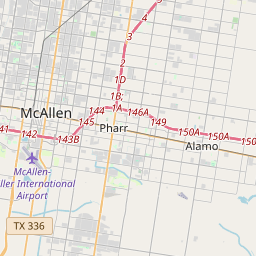
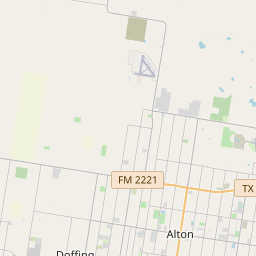

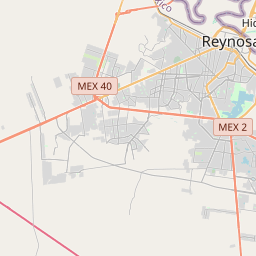















































































































































































































































 Represents a LabCorp blood testing facility
Represents a LabCorp blood testing facility Represents a Quest Diagnostics blood testing facility
Represents a Quest Diagnostics blood testing facility
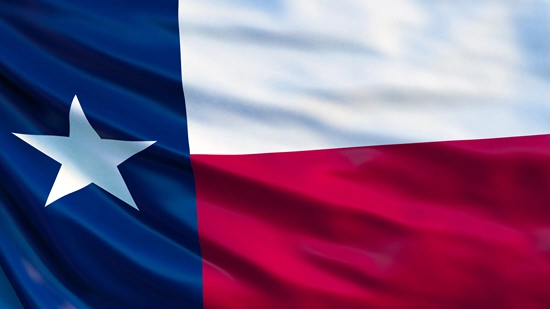
Nearby Labcorp Blood Testing facilities:
- Labcorp Center Distance: 1 m, 1424 East Ridge Road Ste2, Mcallen, Hidalgo County, TX, 78504
- Labcorp Center Distance: 16 m, 1102 S Airport Bldg 2, Weslaco, Hidalgo County, TX, 78596
- Labcorp Center Distance: 34 m, 5505 S Expressway 77 Ste 103, Harlingen, Cameron County, TX, 78550
- Labcorp Center Distance: 48 m, 864 Central Blvd Ste 900, Brownsville, Cameron County, TX, 78520
Nearby Quest Blood Testing facilities:
- Quest Center Distance: 1 m, 1201 East Ridge Road, Mcallen, Hidalgo County, TX, 78503-1531
- Quest Center Distance: 4 m, 2723 W Trenton, Edinburg, Hidalgo County, TX, 78539-3433
- Quest Center Distance: 15 m, 1221 East 10Th Street, Weslaco, Hidalgo County, TX, 78596-4281
Texas Hormone Replacement Therapy Services
Are you interested in Hormone Replacement Therapy Solutions, but don't know where to turn? The Conscious Evolution Institute is your best source for quality Physician-Monitored Bio-Identical Hormone Therapy Services in the United States. We provide fast and effective service to get you the exact Hormone Treatments that you need to balance your health and improve your well-being!
Bio-Identical HGH Injections in Texas
Human Growth Hormone Deficiency is a significant medical condition which can severely restrict your ability to live a long and happy life. If you are over the age of thirty and are suffering from symptoms such as fatigue, poor sleep, depression, and unexplained changes in body composition, you may be a candidate for Bio-Identical HGH Injections.
These injections restore normal and optimal Hormone Balance for patients suffering from Age-Related Growth Hormone Deficiency, potentially allowing them to live longer and healthier lives.
Sermorelin Therapy in Texas
The Conscious Evolution Institute also offers Sermorelin Injections as an alternative to Human Growth Hormone. Sermorelin Acetate is able to restore normal HGH levels by stimulating the pituitary gland, and both forms of treatment have their own particular advantages and disadvantages, but both forms of treatment are incredibly safe.
Low Testosterone Treatments in Texas
If you are suffering from erectile dysfunction or other sexual woes as you grow older, you may be suffering from Low-T. Both Low-T and HGH Deficiency share many symptoms and characteristics, but Low-T has a more significant impact on sexual health.
Bio-Identical Testosterone Replacement Therapy comes in many forms: Cream, Patch, Injections, and even dermal implant, and all of these methods have been proven highly effective at restoring normal Testosterone concentrations in the blood stream. Women can even benefit from the Testosterone Replacement, particularly women that are suffering from symptoms related to sexual dysfunction.
HCG Injections in Texas
Are you overweight or obese? Have you tried everything to lose the weight but have been unable to stick with an effective diet? HCG Therapy may be the perfect choice for you. HCG Injections, combined with caloric restriction, have been clinically shown to encourage weight loss safely and quickly.
HCG encourages your body to burn adipose fat over muscle tissue, and also inhibits the psychological impact of hormones such as Ghrelin, which directly stimulate the feeling of hunger in your mind. HCG Shots prevent the feelings of fatigue associated with caloric restriction, allowing you to live your day-to-day life like normal, while encouraging your body to quickly shed excess bodyfat.
Largest Metro Populations in Texas
Dallas
Dallas-Fort Worth is the largest metropolitan area in the state of Texas, and Dallas is one of the most important economic powerhouses of the United States. Behind Chicago, Los Angeles, and New York City, the area employs more people than any other place in the United States. Dallas also has a large number of Fortune 500 companies.
The Dallas metro is unique, because it is the largest metropolitan city without any form of sea access, which has necessitated it to have a large and broad transportation system based on rail, trucking, and air traffic. Dallas is the home of the MLB Texas Rangers, NBA Mavericks, and NFL Cowboys.
Houston
Houston is the largest city in the state of Texas, and represents the second largest metropolitan population. Like Dallas, Houston is another city with a huge business presence, and is home to more Fortune 500 companies than any other city in the United States besides New York City.
The Port of Houston is one of the most important transportation ports in the United States, second only to the ports of New Orleans in terms of the amount of cargo transported in and out of the United States every year. Houston is home to the NBA Rockets, MLB Astros, and NFL Texans. Galveston also belongs to the Houston Metropolitan area and offers beautiful beaches and contributes to the high tourist value of the area.
San Antonio
San Antonio is the third largest metro area in Texas and the fastest growing area of the state of Texas. San Antonio is much different than Houston or Dallas, because the vast majority of the metro population live within the city limits of San Antonio, with very few people located outside of the city.
The city of San Antonio has a large population of military residents, and is the home of a number of military bases, including Randolph Air Force Base, Lackland Air Force Base, and Fort Sam Houston. The city is home to one major professional sports team: the San Antonio Spurs.
Austin
Austin, Texas, is the fourth largest metro area in Texas and is the capital of the state. The city is widely known as one of the most important cultural centers in Texas, and perhaps even the United States. Austin is most well known for the South by Southwest festival (SXSW), which is a city-wide music festival which hosts many of the most interesting and unique musical acts in the country, in addition to showcasing other forms of art, such as film.
El Paso
El Paso is the fifth largest metro area in Texas, and is located on the far-western tip of the state. The city is located on the border of the United States with Mexico, and is contiguous with Juarez on the other side of the border. El Paso is unique in the United States and even the Western Hemisphere because of its huge bilingual workforce which includes individuals from two countries.
Like San Antonio, El Paso has a large military population. El Paso is home to Fort Bliss and Biggs Army Airfield. Fort Bliss is the largest military training facility in the United States.
All About Mcallen, Texas Geographic Area
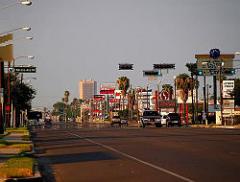
McAllen is the twentieth most populous city in Texas as well as largest city in Hidalgo County, Texas, United States. It is located at the southern tip of Texas in an area known as the Rio Grande Valley and is part of the American South. Its southern boundary is located on the Rio Grande River across the Mexican city of Reynosa, the Rio Grande, and about 70 miles (110 km) west of South Padre Island and the Gulf of Mexico. The 2010 census put the city's population at 129,877 and the McAllen aeEdinburg aeMission metropolitan area at 774,769. The Reynosa aeMcAllen Metropolitan Area counts with a population of nearly 1.7 million.
The area around McAllen was largely rural in character dependent on agriculture for much of its history since it was settled in 1904. The latter half of the 20th century was marked by steady growth that accelerated during the 1980s and led to an economic and population boom in the 1990s and 2000s. Today the McAllen aeEdinburg aeMission metropolitan area is one of the fastest growing metropolitan areas in the United States, although most of its growth was from surrounding smaller cities. The introduction of the maquiladora economy and the North American Free Trade Association led to a boom in international trade, cross-border commerce with Mexico and health care. McAllen's Medicare spending per capita has attracted national scrutiny due to a sharp increase from a national average in 1992 to a near national high by 2006.
McAllen is a regional retail destination for Northeastern Mexican states. While McAllen's total population is 20th among Texas cities, it ranked 12th in overall retail sales, and third in the State in total retail sales per household and per capita.
McAllen is situated on land that was part of porciones 63 and 64, granted respectively by Spain to Antonio Gutierrez and Juan Antonio Villareal in 1767. Gutierrez and his heirs inhabited the land at least up to 1883, and Villareal's heirs lived on his land for at least fifty years prior to 1852. The Santa Anita Ranch was established around 1797 by Jose Manuel GR³mez, who received the land grant from Spain in 1800. He raised cattle, sheep, goats, and horses on his ranch and helped to continue colonizing the area. His great-granddaughter Salome BallR, who inherited the land in the early 1800s, married John Young, a Brownsville businessman in about 1848. They proceeded to acquire land in the surrounding area, and in 1852 Young applied for porciones 64 and 65 in southern Hidalgo County. Young died in 1859, leaving his holdings to his widow and son, John J. Young, with John McAllen, Young's assistant, as manager. McAllen married Salome BallR de Young in 1861, and in 1862 they had a son, James BallR McAllen. They continued adding land to the ranch, which was renamed the McAllen Ranch. The site of present-day McAllen was within the ranch's boundaries.
By 1903 there were scattered ranches in the area, and in March of that year the Hidalgo Irrigation Company was organized. By the next year, the Hidalgo and San Miguel Extension (now the Sam Fordyce Branch) of the St. Louis, Brownsville and Mexico Railway reached the Santa Anita Ranch. John McAllen and his son James donated land to have the railroad cross their land. On December 5, 1904, the McAllen Townsite Company was formed by Uriah Lott, Leonidas C. Hill, Sr., John McAllen, James BallR McAllen, and John J. Young. The new community, which was named for John McAllen, had the depot nearest to the county seat, Hidalgo, eight miles to the south.
By 1911, 5,000 acres was under cultivation in East McAllen with produce consisting of cotton, alfalfa, broom corn, citrus fruits, grapes, and figs. East McAllen had an estimated population of 1,000 that year, and West McAllen had ceased to exist. In 1911 the town applied for and was issued a charter of incorporation under the name McAllen. In 1916, 20,000 New York state troops were stationed at McAllen to help with border disturbances. The resulting economic boom increased the population from 1,200 in 1916 to 6,000 in 1920.
McAllen adopted a home rule charter in 1927. Canning factories, a winery, tortilla plants, wood-working plants, and some oil exploration increased the population to 9,074 by 1930. In 1936 Hiram Garner opened the Valley Distillery, Incorporated, which produced wines from citrus juices. The town was a petroleum and farm chemurgic center with a population of 11,877 in 1940, by which time it had adopted the nickname the City of Palms. In 1941, a suspension bridge replaced the old bridge to Reynosa, Tamaulipas, Tamaulipas; the new toll bridge was purchased by the city and was officially called the McAllen-Hidalgo-Reynosa International Bridge. Its construction resulted in an increased tourist trade that made McAllen a winter resort and port of entry to Mexico. Oil discovered in the Reynosa area in 1947 resulted in a large migration of people from the Mexican interior that constituted a new tourist market and cheap labor supply for McAllen. The sister cities were linked as a result of the increased traffic between them. The population of McAllen was 20,005 in 1950 and 32,728 in 1960. The McAllen-Hidalgo-Reynosa International Bridge was the number-two port of entry into Mexico in 1954.
McAllen was an agricultural, oil, and tourist center in 1970, when the population reached 37,636. By the start of the 1970s, McAllen had a 200-bed hospital and a new air-conditioned high school, the first school in the nation featuring on-site power generated by natural-gas-powered turbines. The tourism industry continued to expand as people traveled to the area from both Mexico and the northern United States. The population continued to grow steadily through the 1970s, and reached 66,281 by 1980. During the late 1980s the McAllen Foreign Trade Zone was an important general-purpose foreign trade zone. At the time McAllen aos main industries were retail, tourism and farming, and each was in trouble. The devaluation of the Mexican peso in the 1980s put a damper on cross-border shopping; local tourism was down because of the recession. In 1983 a freeze took out much of the Valley aos citrus crop.
In the mid-1980s, fueled by trade and the growth of the maquiladora (in which components are shipped to Mexico, assembled and shipped back), things began to pick up in Hidalgo County. McAllen sits across the border from Reynosa, a large manufacturing centre. After the peso devalued it became easier to woo companies to put their plants in Mexico with support operations in Texas. Workers came for jobs, winter Texans returned to enjoy the sun and Mexicans came to spend money. Thanks to tourist dollars, McAllen has the highest retail spending per capita in the state, says its Chamber of Commerce. The result was unprecedented growth, and Hidalgo County aos population soared from about 280,000 people in 1980 to over 700,000 in 2007.
McAllen is located at 26 °12 a²59 a³N 98 °14 a²11 a³W / 26.21639 °N 98.23639 °W / 26.21639; -98.23639 (26.216263, -98.236385). According to the United States Census Bureau, the city has a total area of 46.3 square miles (120 km2). 46.0 square miles (119 km2) of it is land and 0.3 square miles (0.78 km2) of it (0.63%) is water.
Although McAllen is named the City of Palms, tropical vegetation is only locally dominant. There are many deciduous trees such as Rio Grande Ash (Fraxinus berlandieriana), Cedar Elm (Ulmus crassifolia), Sugarberry (Celtis laevigata) and Honey Mesquite (Prosopis glandulosa). In winter, when these trees are bare, many neighborhoods take on a much more temperate appearance.
McAllen has a Semi-arid climate (Koppen BSh). The average high in January is 70 °F and the average low is 50 °F. The average high is 96 °F and the average low is 76 °F in August. The warm season is extremely long, as average high temperatures are above 90 °F (32 °C) and average low temperatures are above 70 °F (21 °C), with relatively high dew point values resulting in higher relative humidity values and heat index values from May through September. Heat index values can consistently reach over 100 °F from May through September.
Average annual precipitation is only 22.96 inches (583 mm). Most precipitation occurs in the warm season, with the least precipitation distinctly occurring in the cooler winter. As September is the peak of the north Atlantic hurricane season and tropical storms and hurricanes occasionally drop copious amounts of rainfall on the region, this month tends to be by far the wettest, averaging 4.08 inches (104 mm) of rain. The driest month is March, with only 0.72 inches (18 mm) of precipitation. Since 1941, it has snowed once, when the city receive 1.7 inches on December 25, 2004.
Temperatures are frequently above 100 °F (38 °C), occasionally as early as February and as late as the end of October, the highest temperature ever recorded in McAllen is 110 °F (43 °C), once in 1998 and once in 1999. The lowest temperature ever recorded in McAllen is 13 °F (-11 °C), on January 12, 1962.
McAllen's population was 129,877 according to the 2010 census. It is the 187th largest city in the U.S. and is part of the 70th largest metropolitan area. The 2000 census put the McAllen aeEdinburg aeMission metropolitan area at a population of 569,463, and growth increased the metropolitan area's population to 774,769 according to the 2010 Census. McAllen accounted for just 23,457 of the 205,306 population growth of the metropolitan area during 2000 to 2010. Most of the metropolitan area growth occurred in the nearby smaller cities.
As of the census of 2000, there were 106,414 people, 33,151 households, and 26,089 families residing in the city. The population density was 2,314.7 people per square mile (893.8/km ²). There were 37,922 housing units at an average density of 824.9 per square mile (318.5/km ²). The racial makeup of the city 78.46% White, 0.61% African American, 0.40% Native American, 4.93% Asian, 0.04% Pacific Islander, 15.85% from other races, and 2.71% from two or more races. Hispanic or Latino of any race were 77.28% of the population.
There were 33,151 households out of which 43.2% had children under the age of 18 living with them, 59.0% were married couples living together, 16.0% had a female householder with no husband present, and 21.3% were non-families. 17.9% of all households were made up of individuals and 6.4% had someone living alone who was 65 years of age or older. The average household size was 3.18 and the average family size was 3.64.
In the city the population was spread out with 30.8% under the age of 18, 10.5% from 18 to 24, 29.3% from 25 to 44, 18.9% from 45 to 64, and 10.4% who were 65 years of age or older. The median age was 30 years. For every 100 females there were 90.1 males. For every 100 females age 18 and over, there were 85.8 males.
The median income for a household in the city was $33,641, and the median income for a family was $36,050. Males had a median income of $30,089 versus $22,480 for females. The per capita income for the city was $14,939. About 20.9% of families and 23.8% of the population were below the poverty line, including 30.5% of those under age 13 and 20.3% of those age 65 or over.
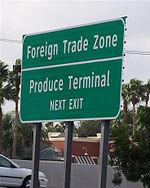
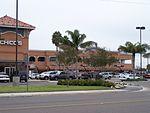
The Rio Grande Valley really didn't begin its rapid develop until the introduction of irrigation in 1898 and the building of the railroad in 1904. These major additions turned a once relatively desolate area into a major agricultural center. Throughout much of the 1900s, McAllen was a rural, agriculture-based economy characterized by sporadic growth. Today, the area is being transformed into a major international trade area by developing first-rate commercial, retail, office, industrial, medical, retirement and educational facilities. As recently as 1990, McAllen's unemployment rate was at 22.6 percent. By the end of 2005, that figure dropped to 7.7 percent. However, In 2011, census.gov listed the McAllen metro area the poorest in the nation.
Since the 1980s and especially since the ratification of the North American Free Trade Agreement in 1994, the focal point of economic activity has shifted from agriculture to international trade, health care, retail and tourism. The McAllen area has also been successful in attracting a number of call centers as a result of a young and trainable workforce. A few of the call centers are Converges, T-Mobile, Merkafon, Hotel.com and Ticketmaster.
In Hidalgo County, cross-border cargo and vehicular traffic have increased 345% and 36.4% respectively since the beginning of 1990's, from 228,133 to 1,015,554 cargo trucks in 2008 and from 10.92 million to 14.9 million automobiles. US/Mexico trade crossing the international bridge in Hidalgo County increased from $5.0 billion in 1994, pre-NAFTA, to $12.56 billion in 2000 and $19.9 billion in 2006. From 1995 to 2006 the Rio Grande Valley share of NAFTA trade increased 168% from $11.1 billion to $31.6 billion.
The McAllen Foreign-Trade Zone (FTZ) is located south of McAllen between McAllen and Reynosa. Commissioned in 1973, it was the first inland foreign trade zone in the United States and continuously ranks among the most active FTZs in the nation. There is also a Foreign-Trade Zone designation site at the McAllen-Miller International Airport to facilitate air cargo needs. Under U.S. and Mexican laws and NAFTA provisions, the FTZ designation offers specific cost-saving opportunities to manufacturers. Products can be brought into the FTZ duty-free. Services have recently extended to include full logistic support services including public warehouse services including pick and pack, order processing, inventory control, incoming/outgoing quality inspection and kitting.
The McAllen Metro Area is the main retail center in the Rio Grande Valley, drawing from a consumer base of over 10 million people within a 200-mile radius, mostly from the Mexican states of Nuevo Leon and northern-central Tamaulipas. McAllen is represented by 40 of America's top 100 retailers and is ranked 3rd in Texas in per capita sales tax receipts. The retail sales sector has become the driving force in McAllen's economy, growing a staggering 138% over the last 10 years, to over $ 3.58 billion and employing 27% of the workforce. The Chamber of Commerce estimates that at least 35% of all retail sales in McAllen are purchased by visitors from Mexico.
Border agencies tally nearly 40 million legal visits a year by Mexicans coming to Texas for leisure activities. The Federal Reserve Bank of Dallas figures they spent $3 billion on merchandise in Texas border counties in 2004, the latest data available, up from around $1.6 billion a decade earlier. In the past 10 years, retail sales in McAllen have risen more than 75%, nearly double the nationwide pace of 40% Per-capita sales here are twice the national average, according to the U.S. Census Bureau.
Forty of the nation's top 100 retailers have recently staked their claim here. When Guess Inc. launched its new clothing boutique, Marciano, in 2004, the company chose Los Angeles, Toronto and McAllen as its three test cities. Foley's, a chain of department stores in Texas owned by Macy's, in Cincinnati, says operations in McAllen and nearby Laredo are its fastest-growing locations. J.C. Penney says about three quarters of customers at its McAllen store are from Mexico and last year the chain allowed Mexican shoppers to apply for its gift registry and credit card.
In 1999, McAllen had one of the lowest concentrations of physicians per person in the U.S., with a value of 1 primary care physician per 2500 people, despite a 53% increase in the physican supply since 1979.
In 2006, McAllen had the second highest per capita Medicare spending in the United States, eclipsed only by Miami (which has higher living and labor costs). That fact served as the basis of a 2009 article in The New Yorker by surgeon and author Atul Gawande which "made waves". In 1992, McAllen was in line with average Medicare spending (~$4,900 for each beneficiary a year). By 2006, the spending had increased to ~$15,000 for each beneficiary a year aealmost double the national average. With a $12,000 per capita income, Medicare billing per beneficiary was three thousand dollars higher than the average income of residents. El Paso, a town with similar demographics, billed Medicare ~$7,500 per beneficiary in 2006. El Paso hospitals, despite spending significantly less, outperformed McAllen hospitals on 23 of 25 health indicators.
Using price adjusted 2007 Medicare data (based on the methods of Gottlieb et al.) McAllen had spending elevations of 86% versus El Paso and 75% versus the national average.
The Texas Department of Criminal Justice (TDCJ) operates an office in McAllen.
The United States Postal Service operates two post offices in McAllen, including the McAllen Post Office and the Downtown McAllen post office.
McAllen is located in a county that usually votes for the Democratic Party. McAllen is represented by two Representatives: Ruben Hinojosa of the 15th Congressional District, and Henry Cuellar of the 28th Congressional District.
Metro McAllen (formerly McAllen Express Transit (MET)) has provided public transportation for the City of McAllen since June 1997. In the beginning, McAllen aos public transportation system, McAllen Express (ME), was administered by the Lower Rio Grande Development Council. Since 2005, Metro McAllen has been operated as a Department of the City of McAllen. Metro McAllen now has seven fixed routes serving residents and visitors of McAllen. It operates six days out of the week, 13 hours per day. In 2003, changes in the census affected McAllen aos urbanized area, and, then MET, lost $1.5 million in operating funds. Nonetheless, the City of McAllen has worked diligently to ensure that service levels are maintained, and continues to plan for service improvements. Ridership in 1997 totaled 42,578 passenger trips. The first full year of operation was in 1998, and the ridership recorded for that year was 201,506 passenger trips. In 2008 Metro McAllen accomplished record high numbers in ridership, totalling 412,151 passenger trips, accounting for more than twice the ridership recorded in 1998.
Fare Structure
Downtown Bus Terminal The City of McAllen also operates the bus terminal facility in downtown McAllen, known as McAllen Central Station. Central Station serves as a hub for MET and for 14 private domestic and international bus lines. Approximately 60 buses depart from Central Station on a daily basis. Central Station also hosts 2 million visitors per year.
U.S. 83 travels through McAllen as its major east-west artery. It runs less than five miles south of downtown McAllen.
McAllen Independent School District serves most of the city. Portions of the city extend into Edinburg Consolidated Independent School District and that district operates two elementary schools located in the City of McAllen. The Hidalgo Independent School District, La Joya Independent School District, Pharr-San Juan-Alamo Independent School District, Sharyland Independent School District, and Valley View Independent School District also serve the City of McAllen.
In addition, residents are allowed to apply to magnet schools operated by the South Texas Independent School District. IDEA Public Schools also has Quest Academy & College Preparatory in North McAllen (mile 17 &1/2 and Rooth road).
The Catholic Diocese of Brownsville operates Our Lady of Sorrows School, an elementary and middle school.
McAllen Public Library operates a main library and two branches, the Lark Branch and the Palm View Branch. The new main branch opened in the fall of 2011 inside a former Walmart, and is possibly the largest single story public library in the U.S.
Birdwatching - The McAllen is positioned on the migratory path between North and South America, presenting bird and butterfly expeditions. The landscape hosts a diverse wildlife population.
The Quinta Mazatlan is the historic Spanish colonial mansion and is McAllen aos wing of the World Birding Center and is a great place to explore and learn about the flora and fauna in McAllen. Children of all ages can register for the science programs, tours and special events throughout the year. Quinta Mazatlan has something for everyone!
The McAllen Dog Park is another place for recreation for dogs of all sizes. The lighted park is located off of Tamarack and 2nd Street. The park is divided into two sections, a big dog and small dog side. The park is usually open until 10pm every night.
The 2nd St. Bike path is another place to enjoy a stroll. This path stretches for several miles and runs from North to South on McAllen's East side. The path is lined with trees, shade, and the occasional marker to let you know where you are at.
The Bicentennial Bike Path runs all the way from Highway 83 on McAllen's South side to Bicentennial and Nolana on McAllen's North side.
The Zinnia Spray Water Park is McAllen's first spray ground park. It's located at 29th and Zinnia Ave.
Bill Schupp Park is park in North McAllen that has giant playscapes for climbing, sliding and having fun. The park has plenty of space to play ball, have a picnic, and there are plenty of trails for running. There is also a sunken garden area for performances.
Palm View Golf Course is located on South Ware Rd. just South of Highway 83. The golf course has 18 holes plus a driving range. This course hosts numerous tournaments year round.
McAllen is home to the professional baseball team, McAllen Thunder, of the North American League. They currently play their games at Edinburg Stadium. They got their start in 2011.
The NBA D-League team, Rio Grande Valley Vipers, is also headquartered in McAllen. They are affiliated with the Houston Rockets of the NBA. They were the 2010 D-League Champions. They play their home games at State Farm Arena in nearby suburb, Hidalgo, Texas.
The Rio Grande Valley Magic of the Lone Star Football League is a professional indoor football team that plays its games at the State Farm Arena. They began in 2012.
The Rio Grande Valley Dorados were a professional arena football team. They began play in 2004 as an expansion member of AF2, the minor league to the Arena Football League. They played their home games at Obra Homes Field at Dodge Arena (now State Farm Arena) in Hidalgo, Texas. The team folded in 2009 after the AF2 folded. The now-defunct Arena Football League owned the rights to the Dorados name and logo as well.
Dynamo South Texas Academy is a soccer development academy created in 2007 by the Houston Dynamo of Major League Soccer. The Dynamo announced the creation of the Dynamo South Texas Academy as the franchise aos first satellite academy. The Dynamo and the McAllen Youth Soccer Association partner up to develop young talent in the Rio Grande Valley region of South Texas with the DSTA aos U-18 and U-15 teams, which train and compete in several South Texas cities, including McAllen, Harlingen and Brownsville.
McAllen has hosted the NAIA national football championship and NCAA Division II national football championship games in the 1980s.
McAllen is home to Rio Grande Speedway, a 1/4 mile dirt track with races the 1st, and 3rd Saturday of each month from March through November, and a national multi-day event around December.
McAllen has become the nightlife and entertainment hub of the Rio Grande Valley.
In 2007, the city of McAllen along with Heart of the City put together a plan to revitalize downtown McAllen with an entertainment strip. This strip is now known as the 17th St. Entertainment District. The Entertainment District is a constant draw on the weekends for people from all over the Rio Grande Valley and Reynosa, TAM, Mexico, including as far away as Monterrey, NL, Mexico.
Also, close by is Austin St, also located downtown, which has close to 6 clubs, lounges, and bars as well as posh dining.
The McAllen Art District is close to downtown and located off of Main St. The area is home to more than a dozen art galleries. Its anchored by Spanish Colonial Nuevo Santander gallery, the McAllen Public Library and by the new Art Village, a 30,000 square foot, Tuscan-style retail facility that includes four buildings and is set to host art galleries, studios and restaurants. The arts district is also home to historic Archer Park and restaurants. On the first Friday of the month regional and local artist display their many galleries throughout the street. There are also music performers that cater to the crowds. The nearby 17th Street Entertainment District is just a quick walk away, as is plenty of shopping downtown.
North McAllen also has it share of nightlife along the Nolana corridor between 23rd St. and McColl Rd. Many bars, lounges, and clubs call this area home.
The historic Cine El Rey hosts live bands, nationally known comedians and theatrical productions right in the heart of the 17th Street Entertainment District where you can enjoy the local nightlife at fine dining restaurants, sports bars, night clubs and lounges.
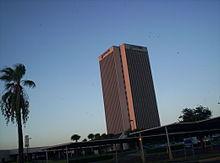
Word Count: 4890






